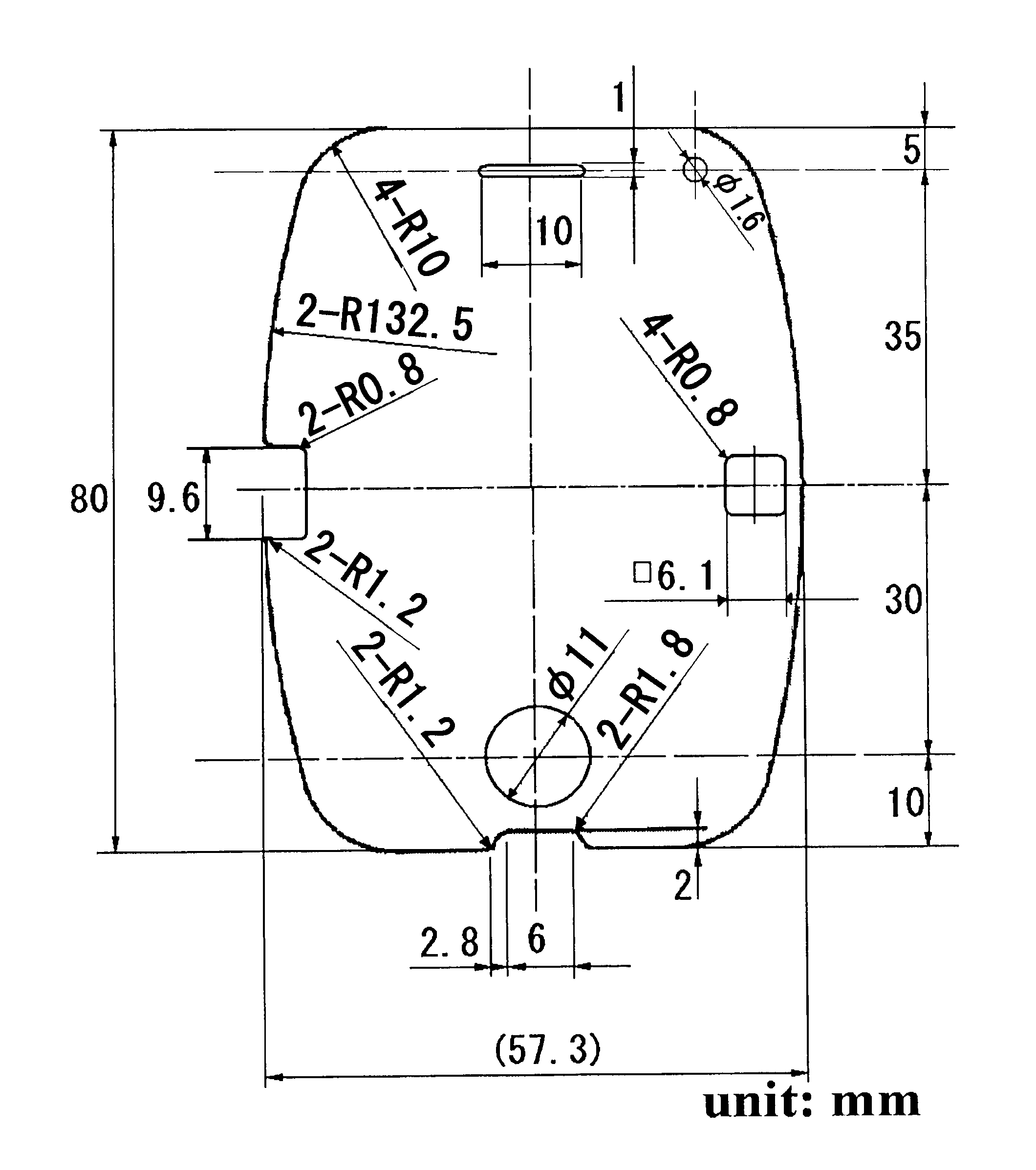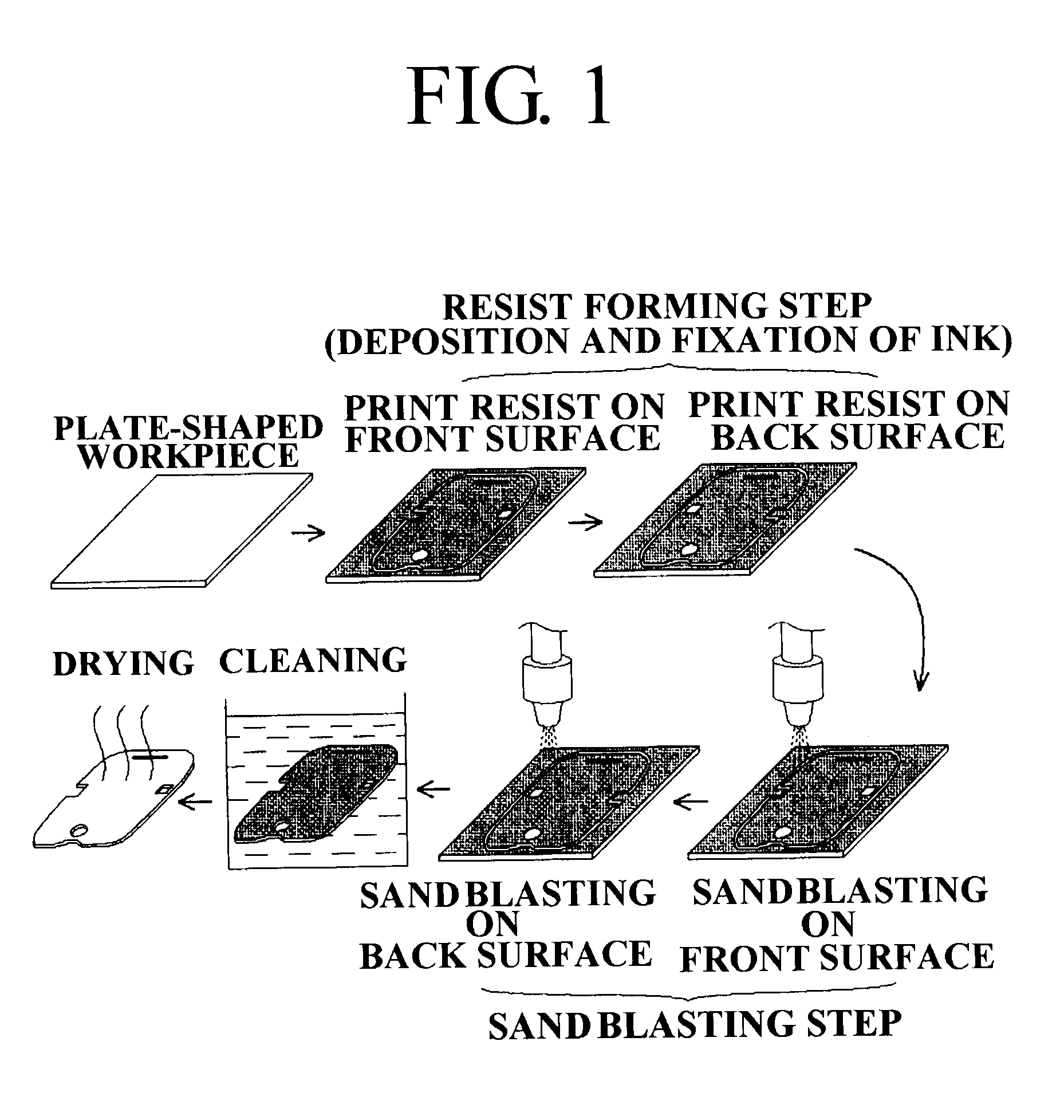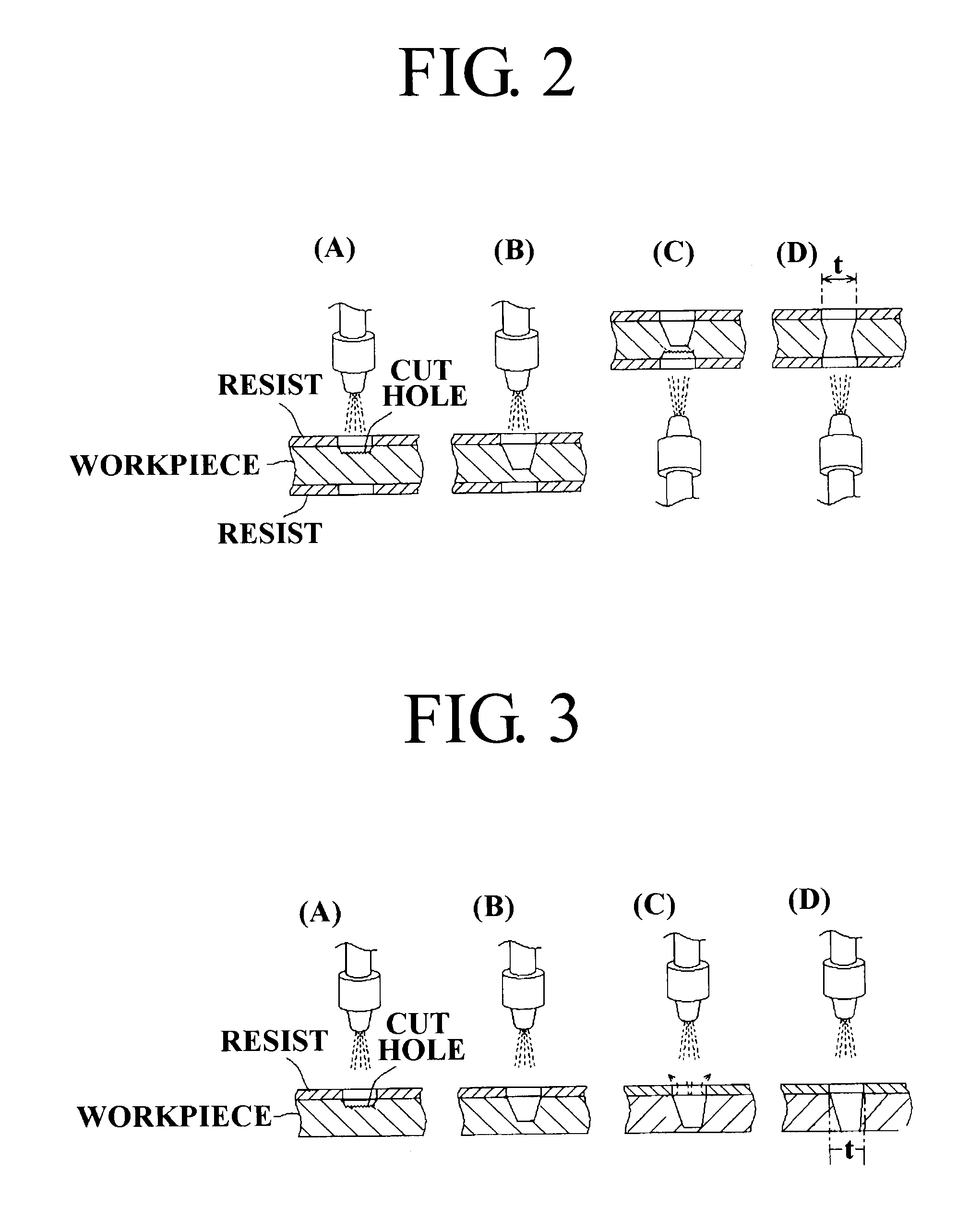Cutting method by sandblasting
a cutting method and sandblasting technology, applied in the field of sandblasting, can solve the problems of inconvenient processing methods, inefficient use of resources, and above-described resist formation by lithography, and achieve the effects of improving the yield of cutting out, high fraction defect, and reducing the work of finishing processing and the like to be performed thereafter
- Summary
- Abstract
- Description
- Claims
- Application Information
AI Technical Summary
Benefits of technology
Problems solved by technology
Method used
Image
Examples
example
[0085]An example of cutting according to the method of the present invention will be described below.
(Workpiece)
[0086]a glass plate of length 90 mm×width 90 mm×thickness 0.7 mm.
(Details of Processing)
[0087]The above-described glass plate was processed in a test pattern shown in FIG. 4. Further, a through slit of width 0.8 mm×length 10 mm and a through-hole having a diameter of 0.8 mm were formed in a similar glass plate.
(Resist Formation)
(1) Resist Ink
[0088]As resist ink, “UVink F-200” manufactured by Mimaki Engineering Co., Ltd. was used. The composition of this resist ink is shown in Table 1.
TABLE 1Composition of Resist InkIngredientContent (%)Tetrahydrofurfuryl Acrylate10-30Isooctyl Acrylate10-25Isobornyl Acrylate10-25Modified Amine Acrylate Oligomer 5-20Aliphatic Urethane Acrylate10-201,6-Hexanediol Diacrylate 1-10Benzophenone 1-10Diphenyl(2,4,6-Trimethylbenzoyl)Phosphine Oxide 1-10Acrylic Ester1-5
(2) Method for Forming Resist
[0089]As a printing apparatus, an inkjet printer havi...
PUM
| Property | Measurement | Unit |
|---|---|---|
| thickness | aaaaa | aaaaa |
| angle | aaaaa | aaaaa |
| length | aaaaa | aaaaa |
Abstract
Description
Claims
Application Information
 Login to View More
Login to View More - R&D
- Intellectual Property
- Life Sciences
- Materials
- Tech Scout
- Unparalleled Data Quality
- Higher Quality Content
- 60% Fewer Hallucinations
Browse by: Latest US Patents, China's latest patents, Technical Efficacy Thesaurus, Application Domain, Technology Topic, Popular Technical Reports.
© 2025 PatSnap. All rights reserved.Legal|Privacy policy|Modern Slavery Act Transparency Statement|Sitemap|About US| Contact US: help@patsnap.com



